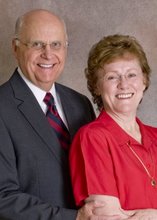 Province. It was in honor of the contribution that “foreign experts” had made to the province. Essentially it was an awards program. The provincial governor was there, and he handed out awards—Oscar-like—to both Chinese and foreigners who had been working on various international cooperation and exchange programs. This was followed by the concert.
Province. It was in honor of the contribution that “foreign experts” had made to the province. Essentially it was an awards program. The provincial governor was there, and he handed out awards—Oscar-like—to both Chinese and foreigners who had been working on various international cooperation and exchange programs. This was followed by the concert. And what a concert it was. A full orchestra came on stage, all in black tuxedos or dresses, just like the National Symphony Orchestra in Washington, DC. Most of the instruments were those normally associated with a classical western orchestra: percussion, horns, basses, and so on. But the string section featured only a family of Chinese instruments I believe are called Huqin that has a drum-shaped, hollow, snake-hide covered sound box at the bottom from which extends upward a round stick on which are strung only two strings that
 were strummed with a bow. A small version called an erhu replicates a violin and a larger one, zhonghu, serves as a viola. Interestingly enough the sound is not dissimilar from their western cousins.
were strummed with a bow. A small version called an erhu replicates a violin and a larger one, zhonghu, serves as a viola. Interestingly enough the sound is not dissimilar from their western cousins.Then the conductor made her entrance. She was a statuesque woman with horn-rimmed classes and shinny, black hair that was pulled back rather severely in a ponytail that streamed glisteningly down her back and extended below her waist. She was dressed in the traditional western black tie and tails and was a strong presence on stage. She directed the orchestra commandingly through a variety of Chinese and western musical pieces. As she shook her head in time with the music, the movement flowed all the way down her hair like ripples in a pond.
The Chinese pieces featured names like, “The Jubilant Yellow Earth,” “Heavenly Road,” “The Butterfly Loves,” and “The Red Detachment of Women.” All were by Chinese composers but sounded very western. We also enjoyed the “Carmen” overture and a piece from La Traviata. It was a first-class performance. All these numbers were performed beautifully. The audience was on its feet for a standing ovation at the end and coaxed two encores from the orchestra. It was a terrific evening.

